Love green cleaning? Cleaning with cornstarch can help get your home sparkling clean… no dangerous chemicals necessary!
Cornstarch is usually purchased for cooking, but it’s also a useful, all-natural cleaning product. Learn the 5 characteristics of cornstarch that make it great for household cleaning and get the best cornstarch cleaning hacks.
This post uses affiliate links.They don’t cost you a thing and help us bring you all natural cleaning tutorials. Read more in Policies and Disclosures.
Homemade Cleaner Ingredients
I love making homemade cleaners to naturally clean and deodorize my home. Unfortunately, I’ve found that online cleaning recipes can range from super effective to total disaster.
The #1 reason homemade cleaners fail? They contain the wrong ingredients!
It’s important to learn more about the ingredients you are using to make sure a new cleaner works as expected.
- Reminder: Some natural cleaning ingredients neutralize one another or produce a dangerous reaction. Avoid these combination.
What is Cornstarch?
Cornstarch, corn flour and maize starch are all names for cornstarch, a natural starch made from the corn kernel. It is made by grinding, washing and drying the endosperm of corn until it reaches a fine, powdery state.
An All-Natural Substance
Because cornstarch is made from 100% corn it is all-natural and gluten-free product. (Please note: If you are opposed to GMO products you can purchase non-GMO cornstarch.)
History of Cornstarch
- Starches have been used in the home since 1000 BC, when ancient Egyptians used grain starches to make cosmetics and adhesives.
- Cornstarch began to be massed produced in 1840 when it was primarily used commercially for starching laundry.
- By 1892 cornstarch powder, as we know it today, was introduced to consumers.
Cleaning with Cornstarch
Cornstarch has 5 amazing characteristics that make it a great, natural cleaner:
-
- Natural Abrasive – Cornstarch is a superfine, natural abrasive that can boost cleaning power. It is insoluble in water (cannot be completely dissolved).
-
- Highly Absorbent – Cornstarch is excellent at absorbing moisture, oil and smells. (This is why cornstarch is one of my favorite cleaning ingredients!)
-
- Friction Reducing – Cornstarch is a silky, fine powder that reduces friction between surfaces.
-
- Natural Thickener – Cornstarch is a great thickening agent when heated.
-
- pH neutral –Cornstarch have no significant acidic or alkaline qualities. It’s pH when mixed with water is about 7 (the pH of the water). This means it can be mixed with many household ingredients (both acidic and basic).
How to Use Cornstarch to Clean Almost Anything
Harness the natural characteristics of cornstarch with these simple cornstarch cleaning hacks:
Hack 1 – Naturally Abrasive Cleaners – Cornstarch can scrub and loosen dirt particles without damaging delicate surfaces.
- Window and Glass Cleaner – Combine vodka, vinegar, cornstarch and water to make a tough, streak-free glass and window cleaner.
- Natural Silver Polish – Make a paste of cornstarch and water, rub and rinse.
- Gentle Scrubbing Cleanser – Mix 1 part water with 2 parts cornstarch. Use to scrub glass cook tops, or pots & pans. (For extra scrubbing power use baking soda.)
- Stuffed Animal Cleaner – Shake stuffed toys in a bag with a few shakes of cornstarch to loosen dirt particles and absorb grease. Vacuum or shake outdoors to remove excess.
- Carpet Cleaning – Sprinkle rugs with cornstarch and baking soda carpet powder to absorb dirt and odors.
Hack 2 – Moisture Absorbent Cleaners – Cornstarch’s ability to absorb moisture makes it the star of many homemade cleaners.
- Cornstarch Deodorant – Cornstarch and coconut oil are the base of this amazing homemade deodorant that absorbs odor and wetness.
- Cornstarch Foot Powder – Smelly feet, stinky shoes, and athlete’s foot are caused by fungus and bacteria that grow in damp, warm environments. Sprinkle cornstarch in shoes and on feet to help absorb moisture or make this cooling foot powder.
- Anti-Caking Agent – Cornstarch absorbs moisture to prevent clumping and caking. Add a bit of cornstarch to homemade cleaning powders to keep them from clumping.
Hack 3 – Oil Absorbent Cleaners – Cornstarch helps eliminate greasy messy by absorbing oil, allowing you to whisk it away.
- Remove Oil Stains – Sprinkle a generous amount of cornstarch on oily spills or smudges on laundry, fabrics, or leater to draw out the oil, let sit for at least one hour, dust or vacuum off, clean or launder as usual.
- Dry Shampoo – No time wash and dry? Sprinkle scalp with a bit of cornstarch and brush through (Stir in a pinch of cocoa powder for dark hair). The cornstarch absorbs excess oil and dirt. (You can also make DIY spray dry shampoo that uses cornstarch and alcohol.)
- Clean Dog Fur – Dust your pup lightly with cornstarch, rub into fur and brush. The cornstarch helps remove dirt and absorbs oil.
Hack 4 – Odor Absorbing Cleaners – Cornstarch is also great at eliminating bad smells.
- Foot Odor Eliminator – Sprinkle cornstarch into stinky shoes and let set overnight. Shake out shoes before wearing. (This foot powder uses essential oils for extra odor fighting!)
- Freshen Musty Books – Sprinkle boots with cornstarch, allow to sit overnight, shake or vacuum clean.
Hack 5 – Friction Reducing Uses– Cornstarch is a silky, fine powder that reduces friction.
- Untie a Difficult Knot – Dust a shoelace knot with cornstarch to reduce the friction between the fibers, making it easier to untie.
- Eliminate Hardwood Floor Squeaks – Dust a squeaky floor with cornstarch, paying special attention to the cracks. Sweep up excess.
- DIY Body Powder: Dust cornstarch on areas that rub or chafe for an all-natural body powder. (You can also sub cornstarch for face powder in a pinch.)
- Natural Glove Powder –Sprinkle cornstarch into rubber gloves between uses to absorb moisture from hands and prevent the rubber from sticking. This allows the gloves to slide on and off easily and is latex free.
Hack 6 – Natural Thickening Uses – Cornstarch is a great thickening agent when heated. Use it to make all-natural gel-type products.
- Homemade Spray Starch – Skip the store-bought and make your own spray starch with water and cornstarch for crisp, non-toxic laundry.
- Homemade Finger Paint – Boil together 1/2 c. cornstarch and 1 quart of water for easy, all-natural finger paint. Stir in food coloring or powdered paint for color.
- Hard Water Remover – Heat vinegar and cornstarch together to make a gel that clings to dissolve hard water stains.
How to Store Cornstarch
Cornstarch absorbs moisture, so it must be keep it in a sealed, air-tight container. Store in a cool, dry place and it will last indefinitely.
Like my green cleaning recipes and tutorials? Sign up for my free newsletter and never miss a thing.


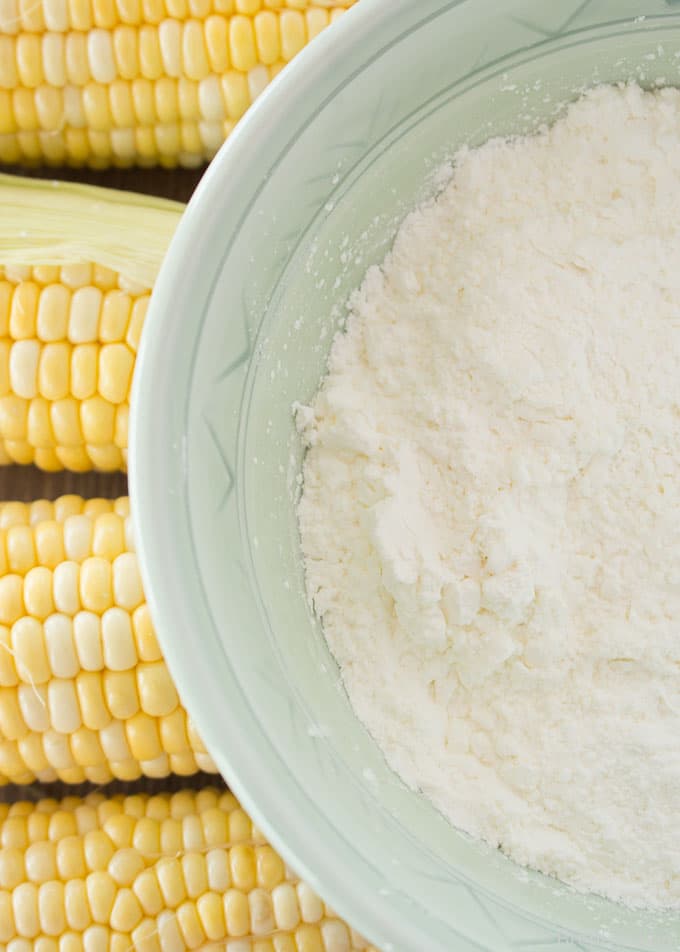
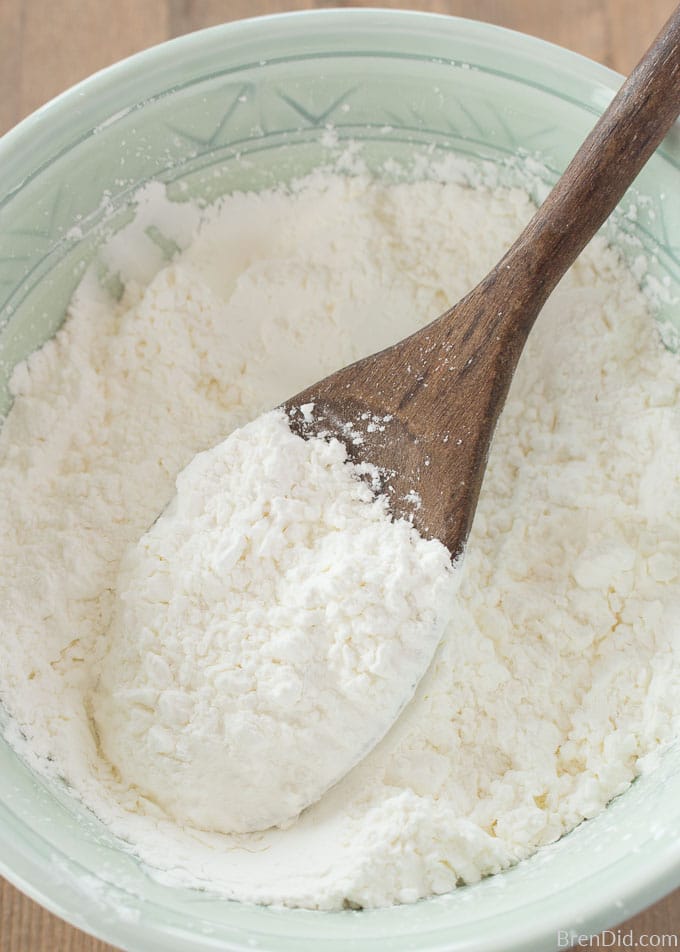
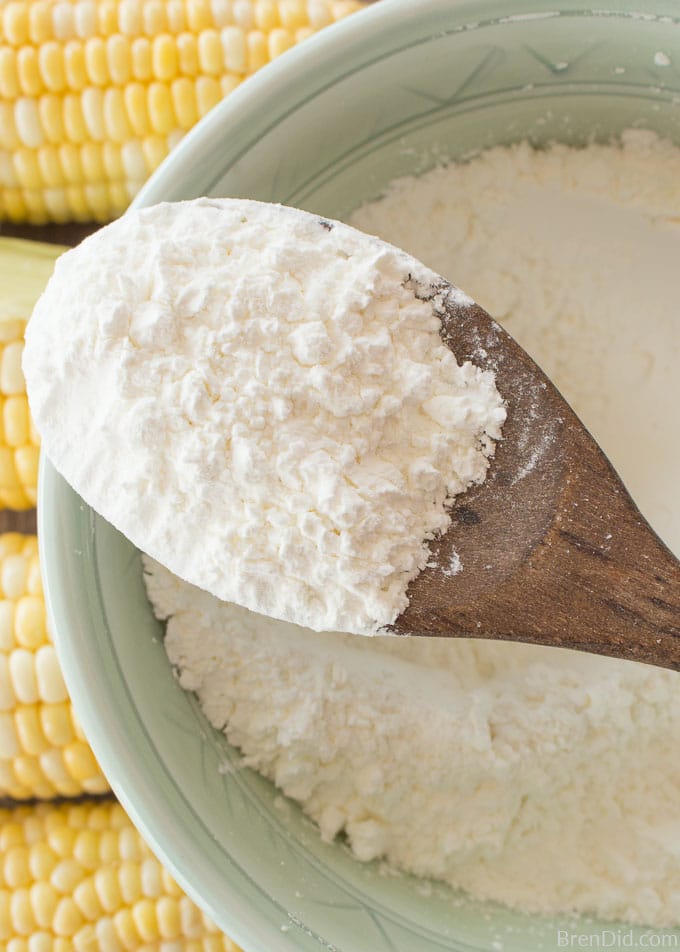
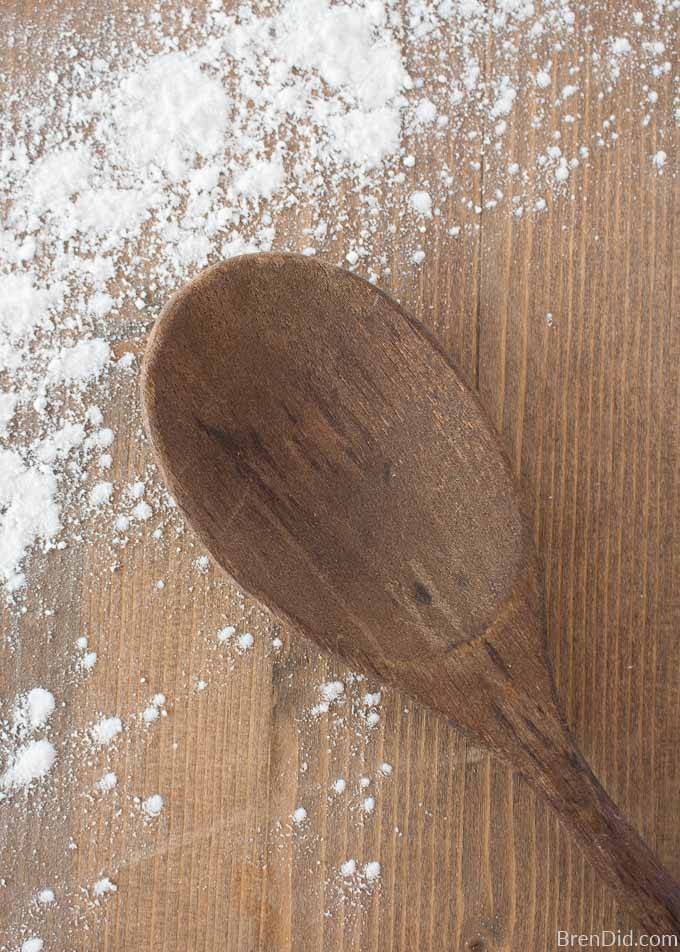

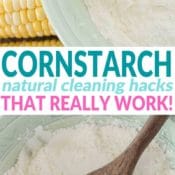
marissa
is it different than using any other flour?
Bren
Yes, cornstarch does not form a paste when mixed with water the same way wheat flour does.